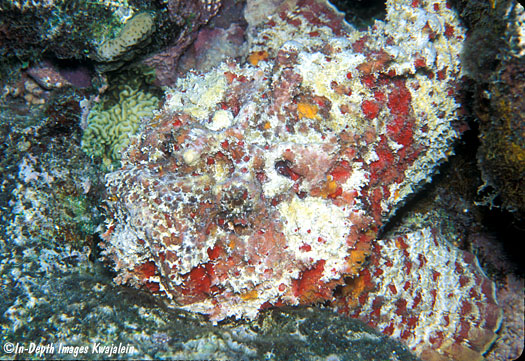
This is the dreaded and highly venomous stonefish, a species with potent venom that has caused human fatalities. While some individuals have splashes of bright color, many are drab and look just like rocks, waiting for prey to come close enough to engulf. These will often bury in the sand up to their mouths and eyeballs, and typically will not move when approached, making it relatively easy to accidentally touch or step on one. Their dorsal, pelvic and anal spines all contain venom. As the spine enters a wound, the flesh around the spine squeezes down around the venom bulbs, forcing venom up a groove in the spine to the tip, where it is ejected into the wound. The venom causes severe and immediate pain and can be fatal. I have seen these as shallow as about 15cm depth in tidepools on the intertidal reef at low tide, as well as in about 25cm depth right next to the boat ramp in Kwajalein Harbor. One wader in shallow water at Emon Beach was stung and hospitalized. Twice I have been lightly stung by touching these fish while not realizing they were there. Fortunately, it takes a deeper sting to force venom into the wound, and I suffered only some pain with each sting. These can be found throughout the atoll, on lagoon, pinnacle and seaward reefs. They do not appear to be extremely common, but are so hard to see they could be more common than we think. A similar looking and more common fish, Scorpaenopsis diabolus, is often mistaken for stonefish.

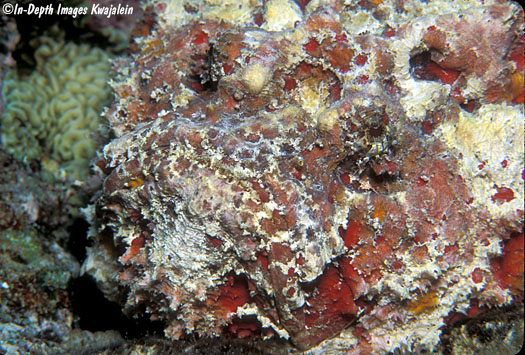
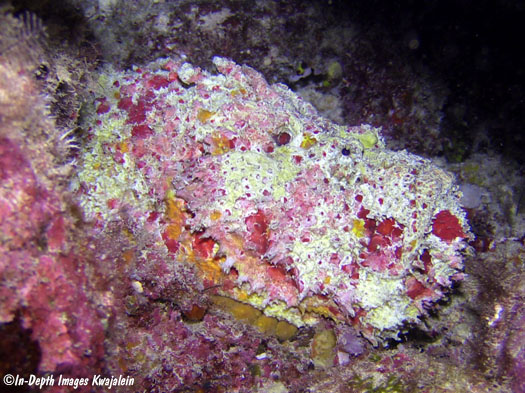
Partly buried in sand.
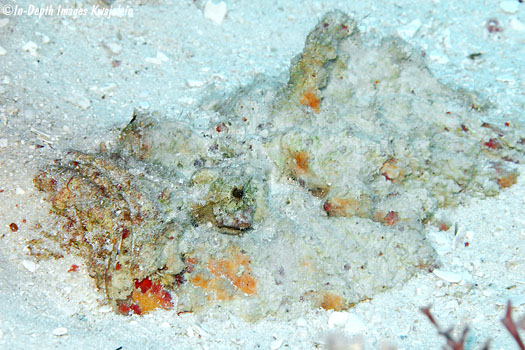
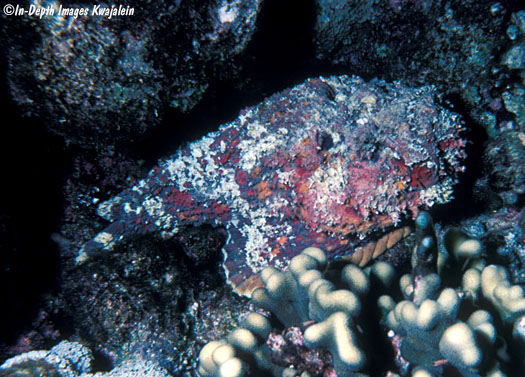
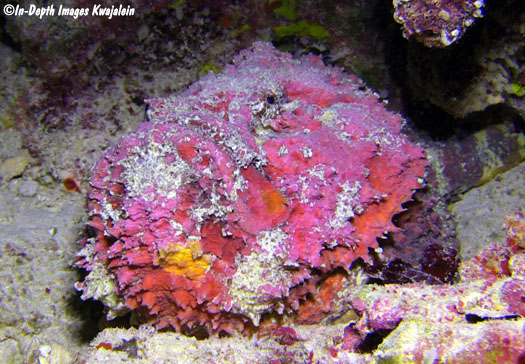
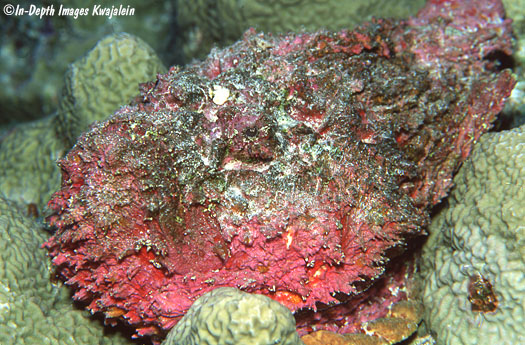
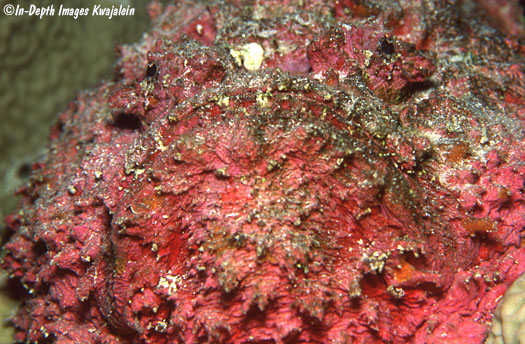
The one below is nearly fully buried in sand, with only its mouth and eyes on top of its head showing. Creeping up from behind is a parasitic snail, Colubraria muricata, which has extended its long proboscis into the skin of the stonefish and is sucking its blood.
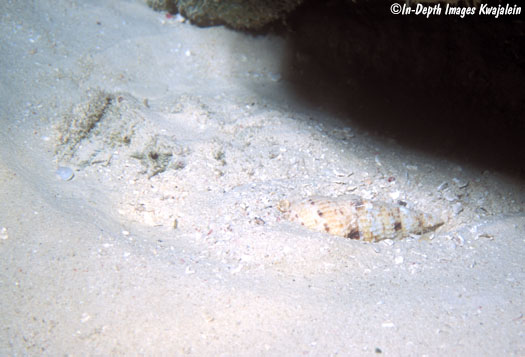
Created 30 August 2015
Updated 27 March 2018